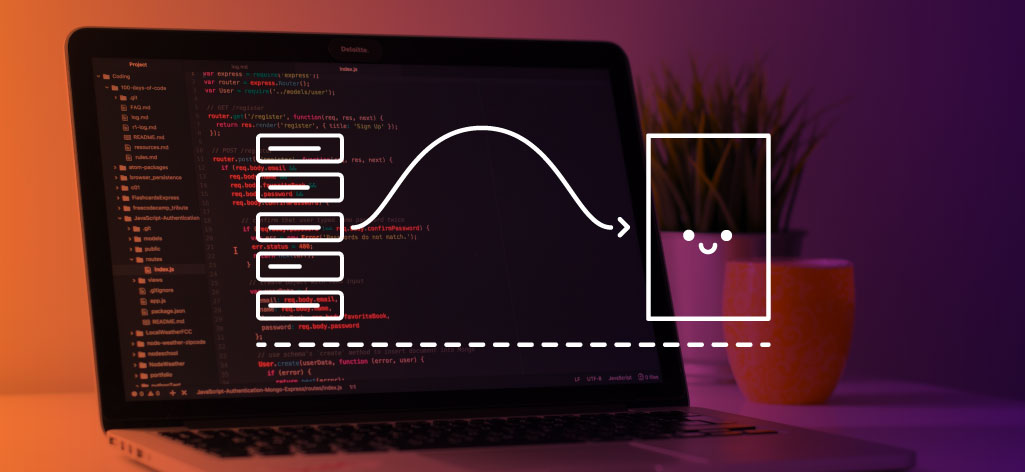by Lee Dussinger
The vast majority of companies use some version of Scrum or Agile – and most people never even question if there’s a better way. At Opal, though, improvement is never-ending. First and foremost, we’re driven to continuously iterate on our best-in-class marketing platform. Of course, the need to build a better machine inspired us to look inward at our own processes…
As was the case with so many software companies, Opal used Agile for many years. However, in 2022, we adopted the Shape Up software development process as a way to level up our product iteration. The Shape Up method proved to be a natural fit for Opal as it prioritizes both exceptional outcomes and work/life balance.
Read our full breakdown to get more background on this trending development process, how it compares to standard methodologies, and our real-life observations on adopting the Shape Up development process.
Exploring the Shape Up Methodology
The simple question – “What is Shape Up?” – kickstarted doing a lot of research, reviewing our processes, and ultimately reading the namesake book. The Shape Up software development process was created by the software company Basecamp and is detailed in the book Shape Up: Stop Running in Circles and Ship Work that Matters. When executed properly, this alternative development framework involves more of the broader organization in development (rather than just the product team) and fosters a natural working rhythm of sprint-and-cool-down periods.
A dual track system, Shape Up features out-of-cycle workflows that shape the upcoming project – as well as in-cycle work that involves the actual software design and development. With those two tracks put together, the Shape Up methodology is centered around 8-week development cycles. These cycles are broken down into Pitching, Betting, Building, and a Cool Down – here’s an in-depth look at each of the stages of Shape Up:

Shaping a Pitch
The Shape Up method begins with pitches for the forthcoming update or feature. Anyone from the organization is encouraged to submit a pitch to improve the product. As part of Opal’s pitching process, there are 6 distinct elements to each pitch:
- The Problem – This is the raw idea the pitch addresses. This often looks like a use case we want to implement in our content operations software or a user challenge we want to solve. Identifying a problem is central to a strong pitch.
- The Appetite – The appetite for the pitch defines the amount of time that must be invested to solve the problem. There are 3 pitch sizes at Opal. Small batch pitches have a one-to-two-week appetite. Medium batch pitches have a three-to-four-week appetite. And large batch pitches max out at a six-week appetite. While the official Shape Up method recommends against medium batch pitches, Opal allows for this size as it enables greater flexibility in the solutions we can build.
- The Solution – The crux of any effective Shape Up pitch, the solution is the answer that addresses the problem that Opalites or our customers have seen. Good solutions are presented in a form that’s easy for people to immediately understand.
- Success Metrics – Being able to identify that a solution has been successful is essential to internal evaluation. We want to ensure that our time and resources are focused on solutions that meaningfully contribute to business outcomes. That’s why pitches must designate two-to-three success metrics. These metrics are a way to identify if the newly-implemented solution has made an impact or has missed the mark – either outcome allows us to learn more. For Opal, this also includes a plan for reporting on these metrics to the entire company at 30, 60, and 90-day intervals. This element was not from the original Shape Up text, but comes from Opal iterating on the framework.
- The Rabbit Holes – This entails potential pitfalls of the solution that need to be avoided. By making note of potential issues ahead of time, it provides full transparency on the pitch for the upcoming betting.
- The No-Gos – Setting a proper scope of work is essential to achieving success. No-gos are defined as anything that the pitch is NOT meant to address. These can include specific functionality, use cases, or anything else outside the scope of the pitch.

Betting Table
One of the key reasons why Opal chose the Shape Up method is that it involves more of the organization in a meaningful way. In addition to pitching, this is accomplished through the betting table.
The next step of the Shape Up software development process involves submitted pitches being decided on by the betting table. The betting table is a meeting held every cycle where key stakeholders’ pitches are reviewed and selected for the next project. At Opal, the betting table includes traditional representation from engineering, design, project management, and executive leadership – as well as company leaders from customer success, customer education, solution consulting, sales, and more. The variety of backgrounds ensures that diverse perspectives from around the organization are represented. While the original text recommends keeping the betting table small, Opal expanded it to ensure true democratization of feedback, incorporating diverse voices from across the organization. While democratizing feedback and creating consensus are more possible than ever using Shape Up, there will be certain times when leadership and the product team need to make a tough call to resolve a stalemate.
Another difference between how Opal and Basecamp implement the Shape Up software development process is that their betting table happens async, with discussion taking place through comments. Even though Opal is fully remote, we’re all about face-to-face interaction, so naturally we host our betting tables over Zoom!

Build Cycle
Once a pitch has been chosen, it moves forward to development. The development period of a Shape Up cycle is when the actual design and engineering takes place. At the end of the period, the feature should be completed.

Cool Down
The final phase of the process is another one of the key differences when comparing Shape Up vs Agile. The standard Agile process consists of continual 2-week sprints without break time built in. However, Shape Up concludes every development sprint with a 2-week cool down period. During this quasi-break period, the team fixes bugs, reflects on lessons from the sprint, prepares for the next sprint, and generally recharges. This cool down period is a natural conclusion to a high-speed sprint – and a nice way to provide a reward at the end of the development cycle. The next betting table takes place during the cool down period so that the process can begin again – and the product can continually get better.
Organization-Wide Benefits of the Shape Up Development Process
Since the Shape Up software development process involves far more of the company than a traditional software methodology, it stands to reason that the benefits would be widespread as well. Opal adopted this new process not just because it was preferable for our Design and Development teams, but because it could have a positive impact on the organization as a whole. From external facing organizations like Customer Success and Sales, to Marketing, and more, the Shape Up methodology benefits the entire Opal team.
After reflecting on the benefits of Shape Up vs Agile, here’s what we’ve found. Some of these are pulled from Basecamp’s perspective in the namesake book – and other observations come straight from the Opal team:
Better Work/Life Balance for Development Teams
Traditional development methodologies like Agile can be notorious for developer burnout – and it’s not hard to see why. Simply put, 2-week sprints are not reflective of building a feature from ideation to implementation. Even if the sprints are successful, the process is taxing. Agile entails continual back-to-back sprints without the reward of downtime. However, every Shape Up cycle includes a cool down period, which is a breath of fresh air for high-speed teams doing high-caliber work. Plus, having a clear cycle of sprint-and-cool-down makes paid time off easier – without concerns about missing important work or creating problems for the team.
At its cultural core, Opal is committed to creating work/life balance for our people. Genuinely, it’s not a slogan for us! Of course, we understand that every company says this exact thing, but this is an organizational change we made to ensure it’s a reality for as many Opalites as possible.
Greater Autonomy for Developers & Designers
The Shape Up development framework isn’t only popular with product teams for the benefit of work/life balance. This process provides more autonomy and flexibility for the developers and designers building the features. In a big picture sense, this means teams are able to make decisions during the build cycle about how solutions are built and implemented. As is noted in both the original book and from our experience, our design and development teams know they are empowered to achieve tangible results that move the business forward – rather than just fulfilling a task list of requirements. Not only does this contribute to job satisfaction, but it also makes everyone more efficient as well. After his first Build Cycle, Senior Software Engineer Patrick Carr commented:
These last six weeks have been the most productive I’ve had at Opal!
Senior Software Engineer Patrick Carr
Democratizes Feedback through Pitching & Betting
So many different members of the organization touch the Opal platform throughout the course of their work. Whether it’s our own teams planning their work, customer success teams implementing features for our clients, or countless others – everyone has ideas about how to improve Opal. They all deserve a chance to have their input heard. Every Opalite is free (and actively encouraged) to submit a pitch for a new feature. An open pitching process ensures that everyone has a voice to make suggestions.
Another hallmark of the Shape Up development process, the betting table also serves to democratize decision making. The premise of the betting table is that it mitigates the emotion or bias that can influence path setting. Ultimately, the betting table ensures that the ideas that will move the business forward are chosen.
Clearer Timelines
One of the key organizational benefits of this software development framework is that it creates transparency around when product updates and new features will be rolled out. For Opal, the impact of clearer timelines for new features has been felt across the organization. This allows the Marketing teams to synchronize campaigns and content around the launch of new features. For the direct customer-facing roles (like Sales and Customer Success), certainty about timelines allows them to always provide the most up-to-date information to their prospects or clients.
Time is Better Spent
Efficient processes are the way that nimble software teams accomplish great things and punch above their weight. One of the reasons that the Shape Up method caught our attention was the impact it could have on the way our time was collectively spent. Shape Up has the potential to dramatically reduce time spent in meetings for engineers, project managers, and product leadership.
From our in-the-field experience, the Shape Up methodology drastically reduced the number of check-ins. In particular, we’ve observed that project managers and leadership have reclaimed far more time to work on bigger picture strategies. We estimate that since adopting this framework, team members have gotten four-to-five hours back per week by cutting the number of (un)necessary meetings! Senior Technical Product Manager Emma Paul noted this difference:
This is the first week in my entire career as a product manager that I am able to be proactive instead of reactive. It feels amazing to be in the state that I’ve tried to get to so hard over the years – but it wasn’t until we adopted Shape Up that it’s actually been possible!
Senior Technical Product Manager Emma Paul
Want to Work with the Shape Up Methodology?
If you’re Googling, “What is Shape Up?” and you read (or even skimmed) this detailed blog, you’re very likely a software engineer or project manager. At Opal, we’re always excited to meet professionals like yourself.
If you want to work in the Shape Up method, that’s just one of the perks of joining the Opal team. We offer a fully remote environment, unlimited time off, salaries that often exceed industry standards, and a culture that genuinely puts people first.
See our current openings and let’s have a conversation!
However, if you have any further questions about the Shape Up methodology and how it is implemented at Opal, please feel free to email Emma Paul, our Group Product Manager, at: emma@workwithopal.com

